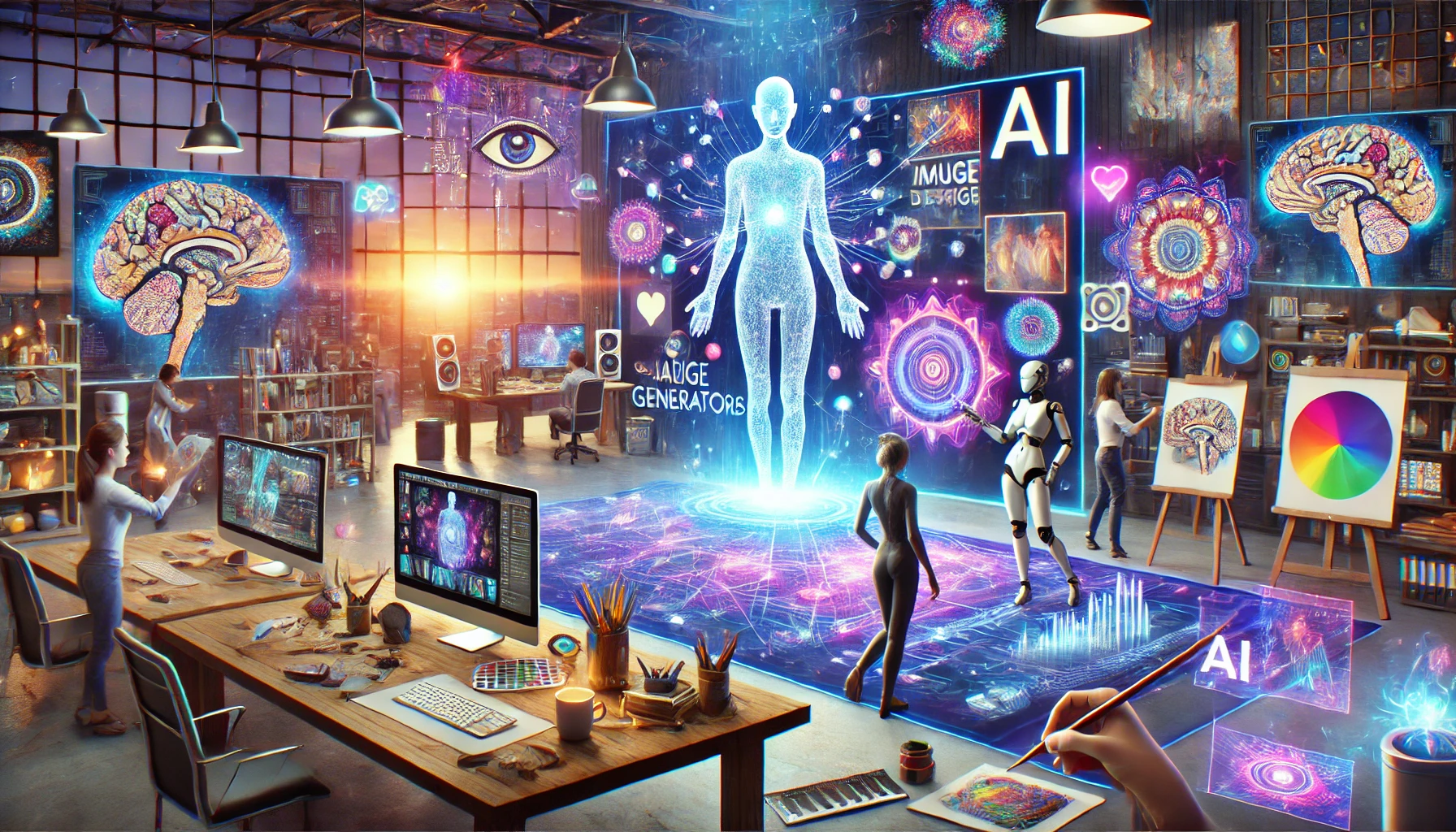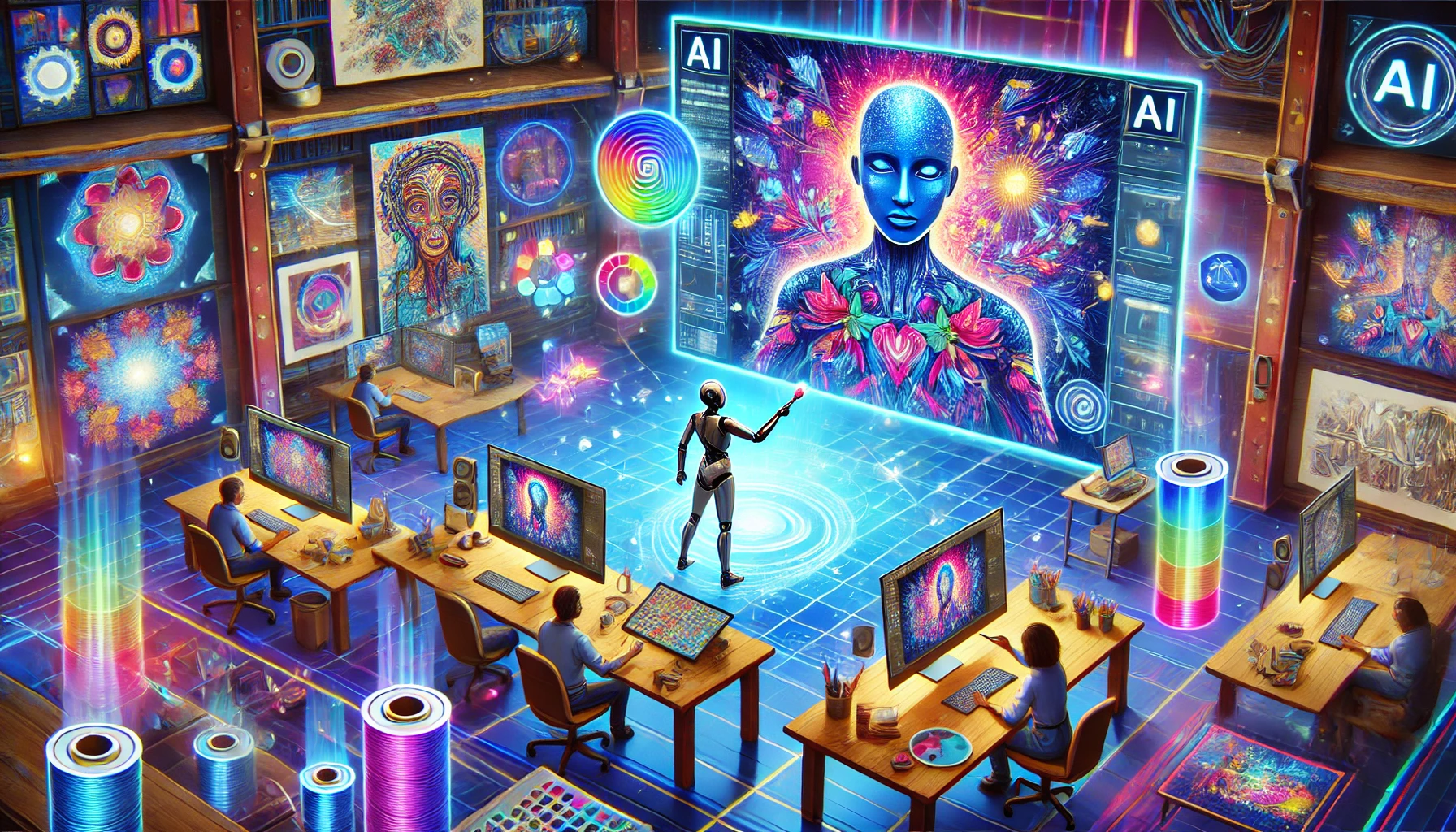
Introduction
Artificial Intelligence (AI) has significantly altered the landscape of digital design and creativity, introducing powerful tools that have redefined how images are created, edited, and conceptualized. AI image generators are at the forefront of this revolution, allowing artists, designers, marketers, and everyday users to create stunning visuals from simple text prompts. These tools can generate high-quality images in seconds, allowing for unprecedented creative freedom and efficiency. This article delves into how AI image generators work, their applications, benefits, popular tools, and tips on effectively using them to enhance your creative projects.
What Are AI Image Generators?
AI image generators are advanced software tools that use machine learning algorithms, neural networks, and vast datasets of images and text to generate visual content based on user input. Users can create realistic or stylized images that suit their needs by entering descriptions, keywords, or prompts. These generators can create anything from abstract art and illustrations to photorealistic images, providing a versatile solution for content creators and professionals.
How AI Image Generators Work
- Deep Learning and Neural Networks: AI image generators are powered by deep learning models, such as GANs (Generative Adversarial Networks) and diffusion models, which are trained on extensive datasets of images. These models learn the patterns, styles, and elements of images, enabling them to generate visuals that match the given prompts.
- Text-to-Image Translation: One of the core features of AI image generators is their ability to translate text descriptions into visual outputs. Users input specific descriptions, and the AI processes this information to create images that align with the details provided.
- Customization and Refinement: Many AI image generators offer customization options, allowing users to adjust color schemes, styles, and other visual elements. This flexibility lets users refine the generated images until they achieve their desired look.
- Adaptive Learning: AI image generators continuously improve their output through adaptive learning, incorporating user feedback to enhance the image’s accuracy and quality. This ongoing refinement ensures that the tool remains relevant and effective as creative demands evolve.
Popular AI Image Generators
Several AI image generators have gained popularity for their capabilities, user-friendly interfaces, and diverse applications. Here are some of the most widely used tools:
- DALL-E 2 by OpenAI: DALL-E 2 is known for generating highly detailed and creative images from simple text prompts. It can produce everything from photorealistic scenes to imaginative illustrations, making it a favorite among artists and designers.
- Midjourney: Midjourney creates artistic and surreal visuals based on user prompts. It is particularly popular for generating concept art and fantasy imagery, allowing users to explore new artistic styles.
- Stable Diffusion: Stable Diffusion is an open-source AI model that allows users to create high-quality images from text prompts. It is celebrated for its versatility and the control it offers users over the generation process.
- NightCafe Studio: NightCafe Studio provides an easy-to-use platform for creating AI-generated art. It offers various styles and effects, allowing users to experiment with different artistic approaches to achieve unique results.
- Artbreeder: Artbreeder allows users to blend and manipulate images using AI, creating unique and personalized art. It is widely used for character design, concept art, and visual exploration.
Applications of AI Image Generators
AI image generators have a broad range of applications, enhancing creativity and efficiency in various fields. Here are some of the key areas where these tools are making a significant impact:
- Digital Art and Illustration
- AI image generators empower artists to create stunning digital artwork quickly and with minimal effort. Whether for concept art, character design, or abstract creations, these tools allow artists to explore new styles and ideas without the constraints of traditional techniques.
- Example: Artists use DALL-E 2 to generate initial concepts for illustrations, which they can refine further using traditional art software like Adobe Photoshop.
- Marketing and Advertising
- In marketing, visuals are crucial in capturing attention and conveying messages. AI image generators help marketers create compelling visuals for advertisements, social media posts, and promotional materials, saving time and reducing costs associated with traditional design methods.
- Example: Brands use Midjourney to generate eye-catching social media graphics that align with their campaigns, enhancing engagement with their target audience.
- Web and Graphic Design
- AI image generators streamline the design process by providing ready-made visuals that can be incorporated into websites, apps, and other digital interfaces. Designers can generate custom images that match their projects’ aesthetic and functional needs.
- Example: Web designers use tools like Stable Diffusion to create unique background images and icons that enhance their sites’ overall look and feel.
- Gaming and Entertainment
- The gaming and entertainment industries benefit greatly from AI-generated art, which helps rapidly create game assets, concept art, and character designs. This speeds up the development process and allows creators to experiment with different artistic directions.
- Example: Game developers use Artbreeder to generate character concepts that 3D artists can further refine, expediting the design phase.
- E-commerce Product Visualization
- E-commerce businesses use AI image generators to create realistic product images, mockups, and virtual showrooms. This capability enhances product listings by providing engaging and informative visuals, helping drive sales.
- Example: Retailers use NightCafe Studio to create visually appealing product mockups for online stores, giving customers a better sense of the items they purchase.
- Educational and Academic Use
- AI image generators are also valuable in education, providing visual aids for teaching complex subjects. They help create engaging content that enhances learning, particularly in science, history, and art.
- Example: Educators use AI-generated visuals to illustrate historical scenes, scientific processes, and artistic styles, making learning more interactive and immersive.
Benefits of AI Image Generators
- Enhanced Creativity: AI image generators open new avenues for creativity by allowing users to explore styles, themes, and concepts that may be challenging or time-consuming to produce manually.
- Time Efficiency: Traditionally, creating visuals can be lengthy and requires extensive skills and time. AI image generators produce high-quality images in seconds, drastically reducing the time required to bring ideas to life.
- Cost-Effective Solutions: Hiring professional designers or purchasing stock images can be expensive. AI image generators provide a cost-effective alternative for small businesses, freelancers, and independent creators.
- Customization and Flexibility: AI tools offer a high degree of customization, enabling users to adjust various elements of their images. This flexibility ensures that the visuals generated are perfectly tailored to the project’s needs.
- Accessibility for All Skill Levels: AI image generators are designed to be user-friendly, making them accessible to professionals and beginners. Users do not need advanced design skills to create visually stunning images.
- Inspiration and Exploration: AI image generators can serve as a source of inspiration, helping artists and designers explore new ideas and styles. The ability to quickly generate multiple variations encourages experimentation and creative exploration.
Challenges and Considerations
- Quality and Realism: While AI image generators have made significant advancements, the quality and realism of the images can vary. Some generated visuals may require additional refinement to meet professional standards.
- Ethical Concerns and Copyright Issues: AI-generated art raises ethical questions, particularly regarding copyright and the use of training data. Users should know the legal implications and ensure the images are used appropriately.
- Dependence on Prompts: The effectiveness of AI image generators relies heavily on the quality of the prompts provided. Vague or poorly defined prompts can lead to unsatisfactory results, requiring users to refine their inputs for better outcomes.
- Data Privacy and Security: When using AI tools, users must consider data privacy and security, especially when generating images for sensitive or proprietary projects. It’s important to choose platforms that prioritize data protection.
- Bias in AI Models: AI image generators can sometimes produce biased or culturally insensitive outputs, as they are trained on datasets that may contain inherent biases. Continuous monitoring and adjustments are needed to address these issues.
Tips for Effectively Using AI Image Generators
- Provide Detailed Prompts: To get the best results, provide clear and specific prompts that include details about the style, elements, and mood you want in your image.
- Experiment with Different Tools: Each AI image generator offers unique features and styles. Experiment with multiple tools to find the one that best suits your creative needs.
- Refine and Edit Outputs: Use AI-generated images as a starting point. For professional projects, refine and enhance the images using design software to achieve the desired level of quality.
- Stay Informed About Licensing: Ensure that you understand the licensing terms of the AI tool you are using, particularly if the images will be used commercially. Respect copyright laws and use the images ethically.
- Engage with User Communities: Join communities and forums where other users share their experiences with AI image generators. This can provide valuable tips, inspiration, and insights into making the most of these.
Conclusion
AI image generators are transforming the creative landscape, providing artists, designers, marketers, and everyday users with powerful tools that bring their visions to life. By leveraging advanced algorithms and deep learning models, these tools offer unprecedented access to high-quality, customizable visuals that can be generated quickly and efficiently. Whether used for digital art, marketing, web design, gaming, or education, AI image generators enhance creativity, save time, and reduce costs, making them invaluable in today’s fast-paced digital world.
However, while these tools offer tremendous potential, it’s important to approach them with an understanding of their limitations and ethical considerations. Ensuring high-quality results often requires refining AI outputs and being mindful of licensing and copyright issues. By combining AI capabilities with human creativity and oversight, users can maximize the benefits of these innovative tools while maintaining artistic integrity and professionalism.

